
1999 Proceedings
1999 Photos
 1999 Proceedings 1999 Photos |

Shown below is a collection of photographs taken during the demostration session.
|
| Kaiser Electro Optics demonstrated the Proview XL-50 XGA-resolution head-mounted display (HMD). The HMD was connected to a stereoscopic video camera pair provided by John Merritt which provided a very interesting telepresence experience. Pictured: (LEFT) John Merritt, (BOTTOM LEFT) Phil Harman & John Merritt, (BOTTOM RIGHT) John Merritt, Phil Harman, Andrew Woods. |
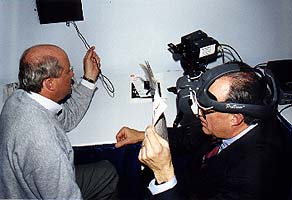 | 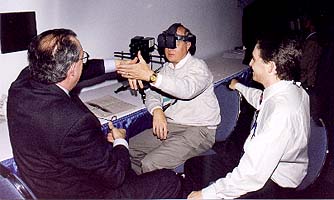
|
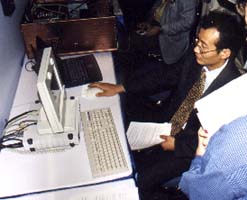 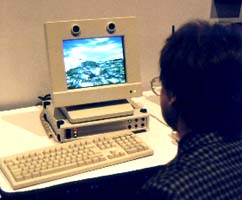 |
| Dresden Technical University (Germany) displayed an improved version of their Dresden 3D display - a parallax barrier based stereoscopic display which utilizes head/eye tracking. |
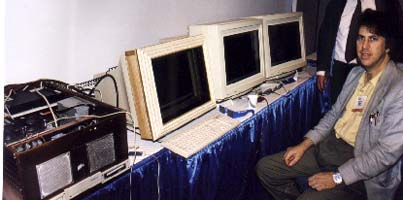 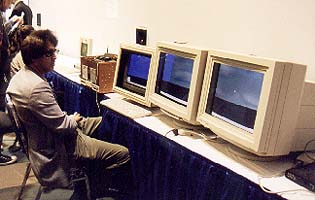
|
| David Mark from Space Age Design Engineering presented a computer system that used three Intergraph graphics cards and three polarized stereoscopic CRT displays to present a wide-screen stereoscopic flight simulation. |
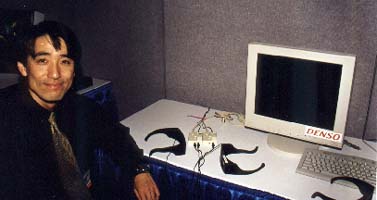
| DENSO Corporation (Japan) demonstrated a TSS-LCD-based 120-Hz field-sequential display. Pictured: Tomihiko Hatori. |
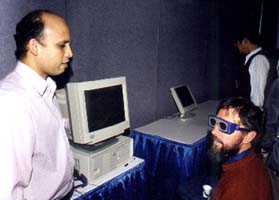
| Ravi Rao of the IBM Thomas J. Watson Research Center (Yorktown Heights, N.Y.) demonstrated the computer-based stereoscopic display system discussed in his paper for the capture and stereoscopic display of objects such as museum artifacts and sculptures. Pictured: Ravi Rao and Duncan Stevenson. |
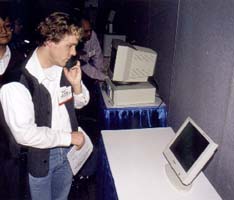 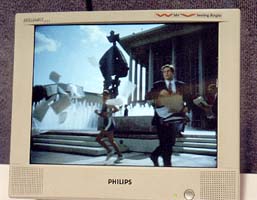 |
| Cees van Berkel of Philips Research Laboratories (Redhill, UK) demonstrated the Philips 3D-LCD: an eight-view full-color autostereoscopic display with overall XGA resolution and providing a resolution of 384×256 per view. |
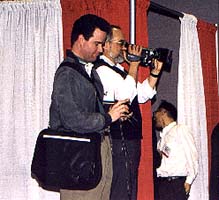
| Mike Weissman was seen wandering the demo room floor with his NuView equipped camcorder. Lawrence Kaufman and Shojiro Nagata were keeping safely out of shot. |
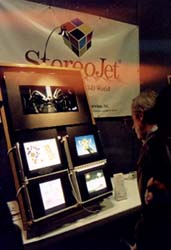
|
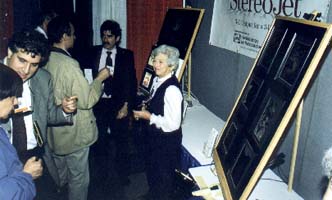 The Slide Factory (San Francisco, Calif.) demonstrated the StereoJet full-color polarized 3D prints and transparencies. |
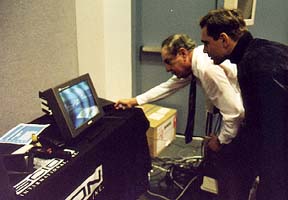
| Scion International (Miami, Fla.) demonstrated a double parallax-barrier-based autostereoscopic display that is used for medical imaging purposes. |
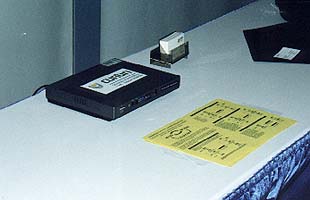
| Curtin University (Perth, Australia) demonstrated the DV120 3D Video Standards Converter for converting field-sequential 3D video between the PAL and NTSC standards. |
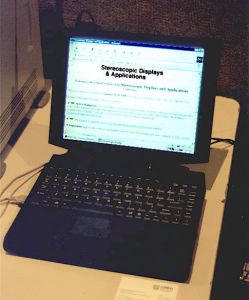
| The Stereoscopic Displays and Applications website (this site) was again demonstrated on an internet connected PC supplied by David Mark. |
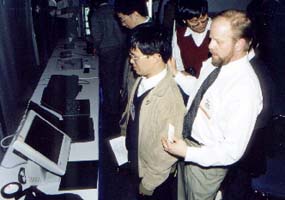
| John Miller of Volumedia (Los Gatos, Calif.) demonstrated two parallax-barrier-based autostereoscopic computer displays. |
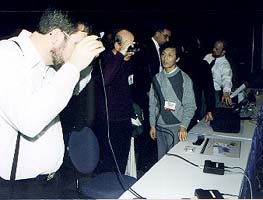
| Mixed Reality Systems Laboratory Inc. (Japan) demonstrated two wide-field-of-view head-mounted displays with free-form-surface prism that provided stereoscopic VGA resolution. |
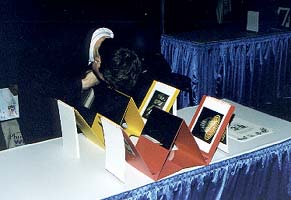
| Three new 3D books "3D Mandala", "3D Esher" and "3D Arts" by Sugiyama Makoto of Think Lab (Japan) were displayed. The books use a mirror based stereoscopic viewer built into the book to view the stereoscopic images which consist of 2D to 3D conversions of famous artworks. |
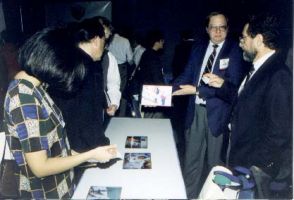
| Lenny Lipton and Jeff Halnon of StereoGraphics Corporation (San Rafael, Calif.) demonstrated their multiview lenticular autostereoscopic prints titled "Synthagrams". |
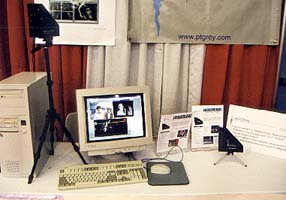 | Point Gray demonstrated a 3 lens camera system which with the aid of smart computer processing is able to extract a depth map of the scene being imaged. |
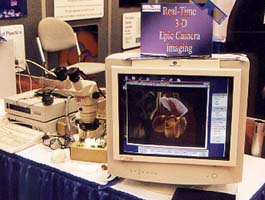 | Optronics displayed a pair of video cameras which can be fitted to the standard eye-piece mounts of a stereo-microscope to capture a stereoscopic video feed. The stereoscopic image was displayed on a stereoscopic monitor being run from a PC. |
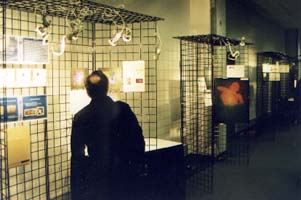 | Once again the hallway outside the conference hosted a holography display in support of the Holography conference. |
